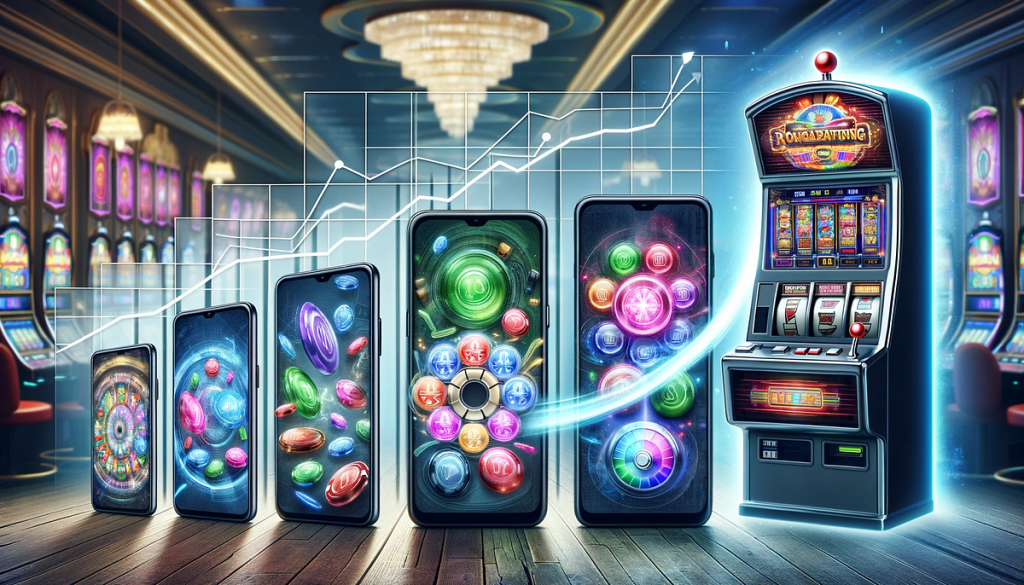Why Ripper Casino is a Top Choice for Australian Players?
Australia has a rich gambling culture, with online casinos becoming increasingly popular among players looking for entertainment and potential winnings. Among the many choices available, Ripper Casino has emerged as a top destination for Australian players. With a range of exciting games, generous promotions, and a secure gaming environment, it provides an unparalleled experience tailored specifically for local users.

A Diverse Game Selection to Suit Every Player
One of the standout features of Ripper Casino is its extensive game library. Whether you are a fan of pokies, table games, or live dealer experiences, the platform has something for everyone. Australian players can enjoy classic three-reel pokies, feature-rich video slots, and progressive jackpot games with massive winning potential.
For those who prefer traditional table games, blackjack, baccarat, roulette, and poker variations provide engaging options. The live dealer section adds another layer of excitement, allowing players to interact with professional dealers in real time. This variety ensures that every type of player finds a game that suits their preferences and playing style.
Generous Bonuses and Promotions
Bonuses and promotions are essential for enhancing the gaming experience, and Ripper Casino excels in this area. New players are welcomed with enticing sign-up bonuses, giving them a strong start on the platform. Regular promotions such as cashback offers, free spins, and deposit bonuses keep existing players engaged and rewarded.
A standout feature is the loyalty program, which provides additional perks to dedicated players. By accumulating points through gameplay, users can unlock exclusive rewards, faster withdrawals, and personalized support. These promotions and rewards make playing at Ripper Casino even more exciting and rewarding.
Secure and Convenient Banking Options
Australian players appreciate a hassle-free banking experience, and Ripper Casino delivers with a range of secure payment methods. The platform supports traditional options such as credit and debit cards, bank transfers, and modern alternatives like e-wallets and cryptocurrencies. This flexibility allows players to choose the payment method that best suits their preferences.
Deposits are processed instantly, ensuring that players can start enjoying their favorite games without delays. Withdrawals are also handled efficiently, with quick processing times for most transactions. Security measures such as encryption technology protect users’ financial and personal information, providing peace of mind when making transactions.
Optimized for Mobile Gaming
In today’s fast-paced world, many players prefer the convenience of mobile gaming. Ripper Casino is fully optimized for mobile devices, allowing users to enjoy their favorite games on smartphones and tablets without the need for downloads. The responsive design ensures smooth gameplay and easy navigation, regardless of the device being used.
The mobile version offers the same high-quality graphics and performance as the desktop version, allowing players to switch between devices seamlessly. Whether at home or on the go, the gaming experience remains immersive and enjoyable, making it a perfect choice for those who prefer flexibility in their gaming sessions.
Dedicated Customer Support for Australian Players
A reliable customer support system is essential for a smooth online casino experience, and ripper casino australia prioritizes player satisfaction. The support team is available 24/7 via live chat and email, ensuring that assistance is always within reach. Whether players need help with account issues, game inquiries, or payment concerns, professional and friendly support is readily available.
Additionally, the comprehensive FAQ section provides answers to common queries, allowing players to resolve minor issues on their own. This commitment to customer support enhances the overall gaming experience and ensures that players feel valued and supported throughout their time on the platform.
Commitment to Responsible Gambling
Ripper Casino promotes responsible gambling by offering various tools to help players manage their gaming habits. Features such as deposit limits, self-exclusion options, and reality checks allow users to maintain control over their gameplay. These tools ensure that players can enjoy the casino experience in a safe and responsible manner.
The platform also provides links to support organizations that assist individuals struggling with gambling-related issues. This commitment to responsible gaming demonstrates that Ripper Casino values the well-being of its players and encourages a balanced approach to online gambling.

Why Australian Players Choose Ripper Casino
With its diverse game selection, generous bonuses, secure payment options, and excellent customer support, ripper casino australia has established itself as a top choice for local players. The platform’s commitment to providing a premium gaming experience tailored specifically for Australians makes it a standout option in the online casino market.
For those looking for a safe, exciting, and rewarding online gaming experience, Ripper Casino offers everything needed for an unforgettable journey.

















